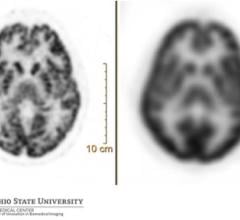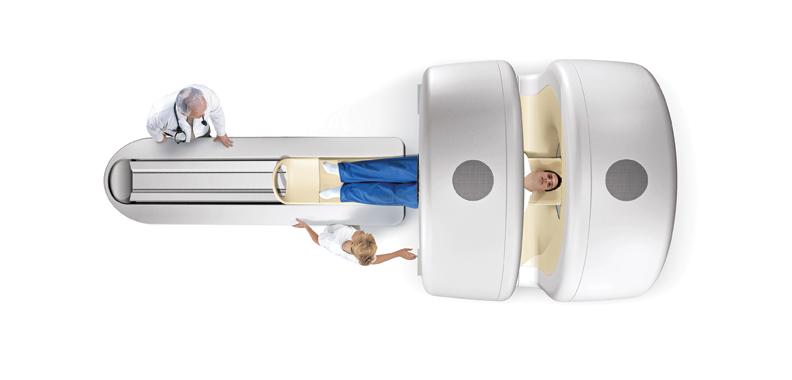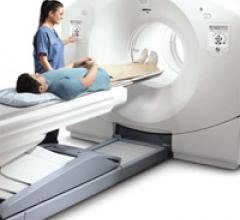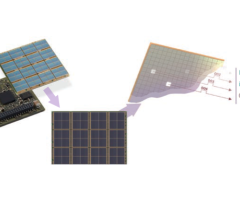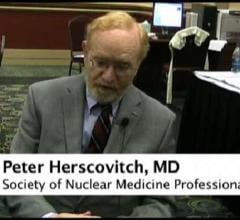June 8, 2011 — GE Healthcare announced the release of its Optima PET/CT 560, which offers efficiency and investment ...
PET Imaging
Positron emission tomography (PET) is a nuclear imaging technology (also referred to as molecular imaging) that enables visualization of metabolic processes in the body. The basics of PET imaging is that the technique detects pairs of gamma rays emitted indirectly by a positron-emitting radionuclide (also called radiopharmaceuticals, radionuclides or radiotracer). The tracer is injected into a vein on a biologically active molecule, usually a sugar that is used for cellular energy. PET systems have sensitive detector panels to capture gamma ray emissions from inside the body and use software to plot to triangulate the source of the emissions, creating 3-D computed tomography images of the tracer concentrations within the body.
June 8, 2011 – The Society of Nuclear Medicine’s (SNM) 2011 Image of the Year illustrates the ability of positron ...
June 7, 2011 — Research presented at SNM’s 58th annual meeting is taking targeted molecular imaging to a new level by ...
Digital technology is opening remarkable opportunities for clinical positron emission tomography (PET) about which ...
June 7, 2011 – This year at the Society of Nuclear Medicine's (SNM) 2011 meeting, Siemens introduced Biograph mCT 20 ...
May 31, 2011 — UltraSPECT, a provider of nuclear medicine (NM) image reconstruction technology that reduces ...
May 26, 2011 - With the deficiencies in knowledge of tuberculosis--as well as in the practices, programs and strategies ...
Precision can have an enormous impact on patients. From diagnosis to patient monitoring (see “How Digital PET/CT Can ...
May 20, 2011 – Medrad Inc., a business of Bayer HealthCare, has announced the launch of the next generation Intego PET ...
May 18, 2011 – Lantheus Medical Imaging Inc. announced data from a phase 2 clinical trial that demonstrated positron ...
The medical imaging market is poised for growth, and among the areas showing great promise are hybrid systems ...
PET is getting ready to venture outside oncology, cardiology and mainstream neurology. High on the list of new clinical ...
May 16, 2011 — GE Healthcare today received the Price Performance Value Leadership Award in PET (positron emission ...
May 11, 2011 – Telemis has released new software for its medical image-management system, which provides a full-featured ...
May 6, 2011 – Naviscan has entered into a distribution agreement with Tecnologie Avanzate s.r.l. to market and service ...
Analog is approximate. Digital is specific. Therein lies the fundamental difference between digital PET and its analog ...
May 4, 2011 – Researchers from the University of Cincinnati presented results from a prospective study at the American ...
April 22, 2011 – At the Society of Nuclear Medicine’s annual meeting, Philips will highlight several new imaging systems ...
A new PET/CT scanner has been introduced that helps address the increasing cost pressures faced by healthcare providers ...
SNM's Clinical Trials Network (CTN) last week validated its 100th scanner, an important milestone in CTN's two-and-a ...
April 4, 2011 – The U.S. Food and Drug Administration (FDA) has given a complete response letter to Eli Lilly and its ...
March 24, 2011 – A new study by Craig Thiessen, M.D., director of radiology for West Houston Radiology L.L.P. and North ...
An interview with Peter Herscovitch, M.D., chief of the positron emission tomography (PET) department, senior attending ...
An interview with Peter Herscovitch, M.D., chief of the positron emission tomography (PET) department, senior attending ...


 June 20, 2011
June 20, 2011 


